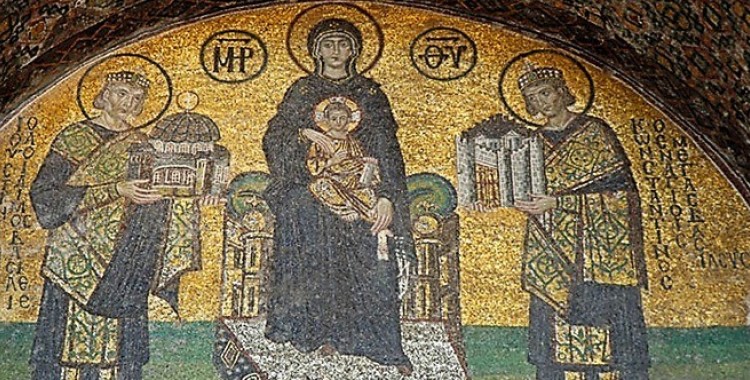The Nova Roma Relics of Istanbul

The Nova Roma Relics of Istanbul
Galata Tower
Considered among one of the oldest towers in the world and one of the symbols of Istanbul, Galata Tower (Galata Kulesi) was included in the UNESCO World Heritage Temporary List in 2013. Galata Tower, one of the most important structures that make up the silhouette of Istanbul, was used as a long-term fire watchtower and was named Galata Fire Tower.
Basilica Cistern
The Basilica Cistern was given its name for the reason of being located under the Stoa Basilica. It covers an area of 140 meters long and 70 meters wide. The cistern has 336 marble columns in Ionic or Corinthian styles, which are 9 meters in length. To enter the cistern, one has to go down a 52-step staircase. Water was brought from the reservoir in E?rikap?, in the Belgrade Forest, 19 kilometers away from the city. The cistern was capable of storing 100,000 tons of water coming from the reservoir. With the 971-meter-long Bozdo?an Aqueduct and the 115.45 meter long Maglova Aqueduct, the water was transported to the city center which was built by Emperor Justinian.
The Little Hagia Sophia
The oldest surviving Byzantine monument in Istanbul, Küçük (“Little”) Hagia Sophia was constructed under the emperor Justinian near the southern city walls on the shores of the Sea of Marmara in a.d. 527–536. In 1504, the building was converted into a mosque. In the 1950s, the area in front of the city walls near the building was claimed from the sea and opened to traffic. A railway was later built next to the building. Although the sanctuary was restored in 1996, it was damaged by an earthquake in 1999, resulting in a series of cracks in the central dome that have allowed rainwater to seep in. This damage has been compounded by differential settlement, rising damp, and constant vibrations from the railway and road. Construction of a new sea wall nearby also raised the water table and affected the foundation of the mosque. Last update: December 2010
Hagia Sophia
Today's Hagia Sophia (Turkish:Ayasofya, Latin: Sancta Sophia, Spanish: Santa Sofia, Russian:Собор Святой Софии, literally:Holy Wisdom or Divine Wisdom) is the third building constructed in the same place with a different architectural understanding than its predecessors. Hagia Sophia considered the embodiment of Byzantine Architecture and also said changed the history of architecture. By the order of Emperor Justinianos, it was built by Anthemios (mathematician) from Tralles (today's Aydin) and Isidoros (geometrician and engineer) from Miletos (today's Balat). The construction started in 532 and was completed in a period of five years and opened for worship in 537 with great ceremony. An earthquake swarm which hit the Constantinople from May 7,558 to following the years 546 and 557 were destructive. The dome of the Hagia Sophia collapsed and thousands of houses couldn't resist magnitude of quakes.
Join us for a great day!
Please fill the request form or send an e-mail (info@istanbulshuttle.com) or use whatsup (+90 530 5802807) for reservations.